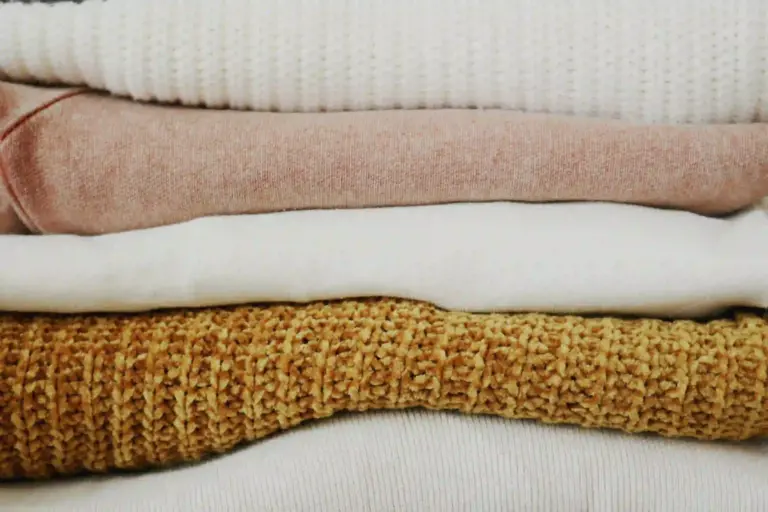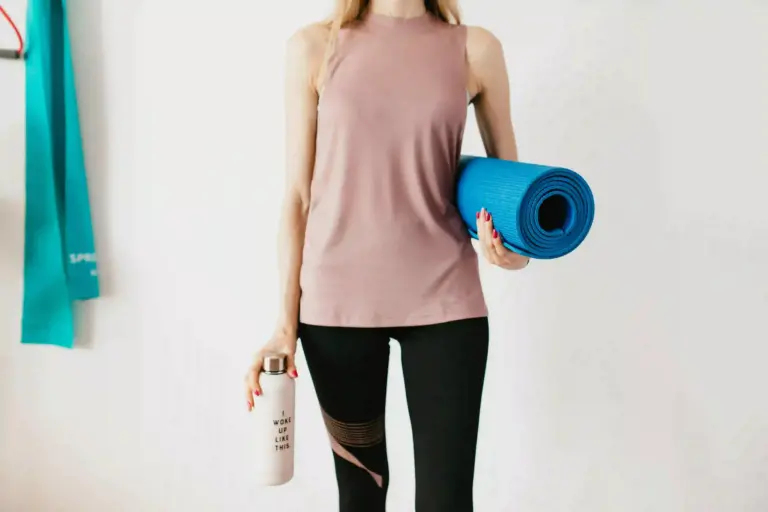Merino wool is an ideal base layer choice if you prioritize natural materials, breathability, and odor resistance. And if you prioritize affordability, quick drying and durability, synthetic fibers are ideal.
The best base layer for you depends on your personal preferences, budget, and the specific conditions you’ll face. This article will break down all of these options to help you choose the base layer that’s best for you.
What are the advantages of synthetic base layers?
Synthetic base layers are highly moisture-wicking, quick-drying, lightweight, and durable. They are also cheaper than wool or silk. As a result, they are now the base layer of choice for most people.
The term “synthetic” actually covers a variety of different man-made materials, each with subtly different properties. For example, nylon (polyamide) fabrics are more durable than polyester, but are generally less breathable. Most synthetic base layers (T-shirts and underwear) are made of polyester.
–Synthetic fibers are highly moisture-wicking and quick-drying
Synthetic fibers are “hydrophobic,” meaning they don’t absorb much water. Therefore, they dry quickly and wick sweat away from the skin. This is the main reason why they make such great base layer material.
Moisture wicking works with your skin and any outer layers to keep you at the right temperature and reduce chafing throughout the day. The spaces in the fabric’s structure draw moisture (sweat) into them through a process called “capillary action” and move it to the outer surface where it can evaporate.
Rapid evaporation can cool you down and prevent you from overheating. It also prevents you from getting wet and cold as your body cools down. You may see this referred to as “humidity regulation” or “temperature regulation,” but these are just fancy terms for dealing with sweat and staying comfortable.
–Synthetic base layers are very durable
Part of the reason synthetic fibers are so widely used is their durability—their ability to resist snags, tears, abrasion, and pilling. They can handle some serious rough use and are easier to clean and care for – handy if you’re traveling with limited washing/drying facilities.
–Synthetic materials are lightweight
Because synthetic fibers are so strong, they can be knitted or woven into extremely lightweight fabrics. This is a huge advantage when downsizing your pack on multi-day trips.
-Skin friendly
The thin, smooth fibers make synthetic fibers more suitable for allergic skin and suitable for people with wool allergies.
–Synthetic base layer is highly breathable
Breathability refers to how well a fabric allows water vapor to pass from the inside (near your skin) to the outside (the layer below you or the air outside). However, since polyester and nylon fibers do not absorb moisture, the breathability of synthetic base layers can vary greatly based on the weight and construction of the fabric.
What are the benefits of merino wool base layers?
Merino wool base layers are naturally breathable, insulating and odor resistant. They also have some really cool features that will keep you comfortable and at the right temperature in a variety of conditions.
Merino wool is much finer than other wool fibers. To qualify as “Merino Wool,” wool fibers must be less than 24 microns in diameter (about 1/10 the width of a human hair). The weight of fabric is measured in grams per square meter (gsm) – this is a good guide to how warm the base layer will be.
–Wool is naturally breathable
Merino wool is an active fiber that adapts to the environment and body temperature. All natural fibers absorb and release moisture, but wool is great at it.
Wool does this by absorbing moisture into the structure of the fiber itself, then expelling it to the outside air. This helps maintain your body temperature levels the same way wicking sweat does – evaporating sweat to cool you down when you overheat and keeping the surface of your skin dry to keep you warm when you cool down.
In fact, wool fibers can absorb up to 35% of their weight in moisture before they feel damp to the touch. When your base layer is unable to absorb more moisture, its fibers will absorb moisture in the same manner as synthetic fibers.
–Wool has temperature regulating properties
Breathable wool fabrics control the rate of evaporation better than synthetic fabrics. When the surface of your body is hot and humid, wool’s moisture is quickly released from the fiber. And when the surface of your body is cold and dry, moisture slows down.
There’s also a clever chemical reaction that releases heat when water molecules react with molecules in wool fibers. This prevents rapid cooling when you’re sweating after a hard climb.
–Merino wool is naturally insulating
Wool fibers have a natural waviness (or “crimp”) that creates large pockets of insulating air when they are layered together. The finer the fibers, the larger the ripples and the more air pockets created. This gives fine merino wool an excellent warmth-to-weight ratio.
Because Merino wool fibers are so stretchy, they don’t lose these air pockets when wet, providing insulation even when wet.
–Next to skin comfort
Because merino wool has very fine fibers, it is softer than standard wool and is less itchy for all but the most sensitive skin. It’s hard to explain why, but merino wool base layers also wear much better than synthetic fabrics.
And, because the fibers can absorb a lot of moisture before the fabric starts to get damp, a merino wool base layer rarely leaves your skin feeling clammy unless you’re sweating all the time.
–Merino wool is naturally odor resistant
Wool is inherently odor-resistant, unlike synthetic base layers that require a treatment like Polygiene to stay fresh. By keeping the skin’s surface dry, wool reduces the growth of odor-causing bacteria in the first place. But wool also traps odors within its fiber structure, releasing them only when the garment is washed. In addition to this, studies have shown that merino fibers provide a less hospitable environment for odor-causing bacteria than synthetic fibers.
-Biodegradable
As a natural fiber, merino wool biodegrades under the right conditions rather than lingering in the environment for years.
-Flame retardant
Merino wool is naturally flame retardant. This means it won’t melt or stick when exposed to fire.
What is merino wool blend fabric?
The blend combines the natural benefits of merino wool with the durability and ease of care of synthetic fabrics. Mixing base layers are the best all-rounders.
Many manufacturers use a technique called “core-spun yarn,” which wraps a nylon and spandex core with merino wool. Still 86% merino wool, this makes the fabric more durable and stretchy for a better fit and recovery after use.
When Synthetic Base Layer Is the Best Choice
Synthetic base layers are great for warm weather or high-intensity activities like trail running and biking. Its high-wicking, quick-drying fabric keeps you cool and dry and reduces the risk of chafing or overheating. Since the fiber doesn’t absorb water, it won’t become heavy with sweat.
When merino wool base layers are the best choice
Merino wool base layers are best for mild, cold weather, or for intermittent activities like hiking and mountain climbing. Merino wool’s natural breathability and temperature-control properties keep you more comfortable in all conditions, even when you slow down. Merino wool base layers are great for multi-day backpacking and bike tours (mainly to avoid everyone you come in contact with!) thanks to their odor-resistant properties. Meanwhile, a merino wool base layer can add vital warmth to a layering system for winter sports like mountaineering, ice climbing or skiing.
So, what are the best base materials? In fact, both merino wool and synthetic base layers have a place in your wardrobe. Which one you choose depends on the activity, conditions and trip length. You may find that you prefer one over the other for different activities or times of year. Eventually you will find that both types of base layer have their own characteristics, and you will fall in love with both at the same time.












